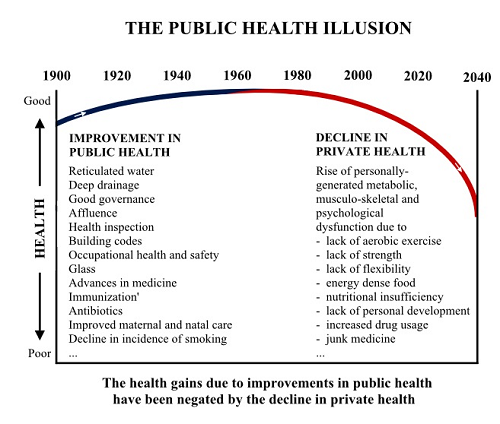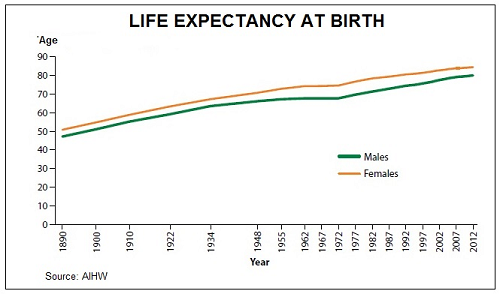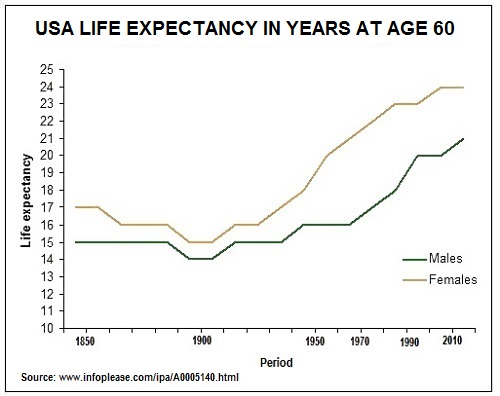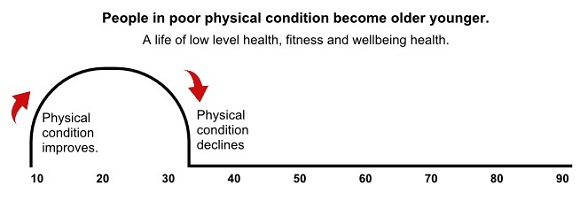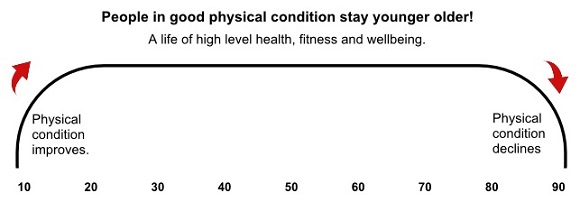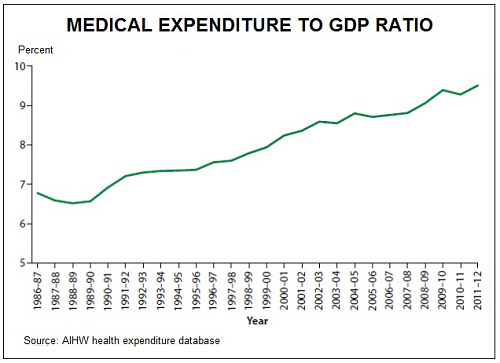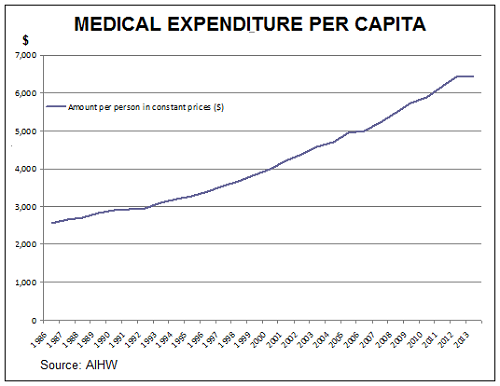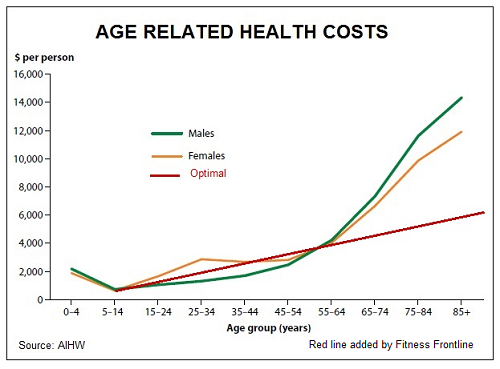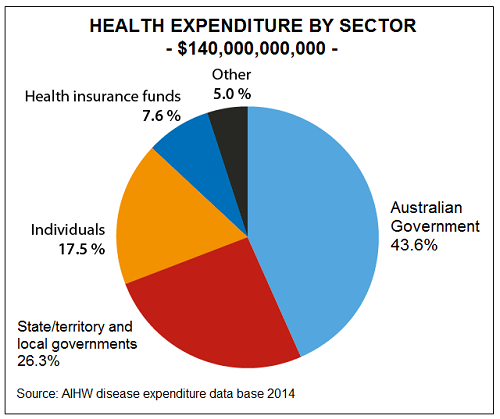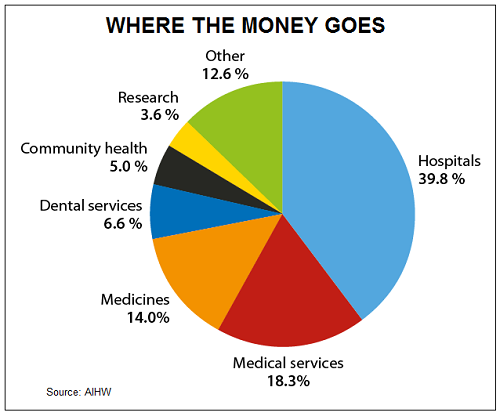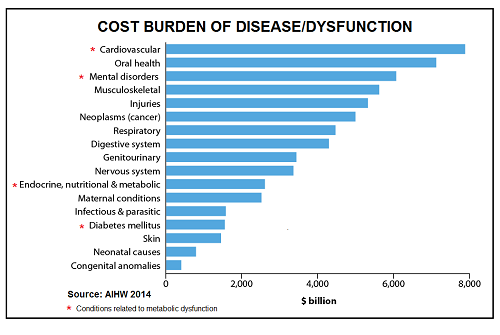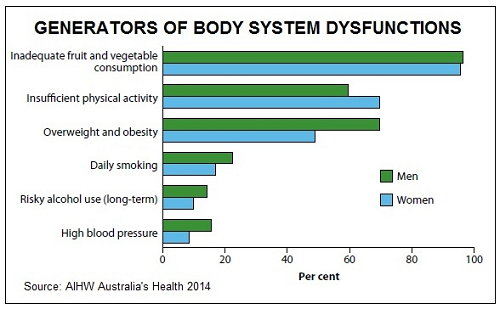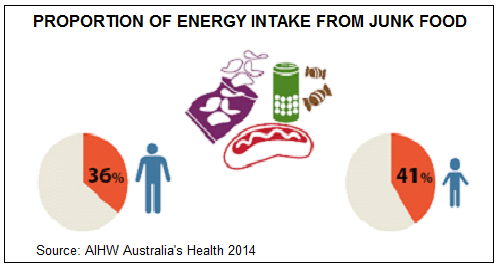|
One small step ...
Ebooks, videos and audio files
Download the Frontline Primary Health Care Blueprint
|
Despite the average age of the population increasing, the health of Australians is getting worse.
In 1900 people were 'lean and hard and wiry', but without access to mass immunization, antibiotics, high-tech medical services, reticulated water, deep drainage ..., the lives of otherwise fit and healthy people could be cut short by the dead hand of fate.
Since the turn of the 20th Century life expectancy has been improving.
However, the graph doesn't tell the full story. Based on American statistics for white males and females aged 60, between 1850 and 1950, the expected longevity hardly changed at all changed - from 15 years to 16 years for men and 17 years to 18 year for women.
When, over the last 80 yerars, you strip out infant and maternal mortality, heroic infectious diseases, accidents, wars that cause tens of thousands to lose their lives, the decline in smoking rates from 40% to 10%, and add hundreds of billions of dollars a year in medical costs, in the Australian context, increasing male lifespan by 5 years and female lifespan by 4 years in the last 55 years, doesn't make for as rosy a picture as the Australian Institute of Health and Welfare may portray. The Institute's official position is that, 'The health of Australians is getting better, they're living longer.' It would be more apt to say, The health of Australians is getting worse - and they're are living longer.'
Women's longevity began to take off in the 1950's as the full effect of advances in public health took effect.
Male longevity lagged and didn't pick up until the 1970's. We can only presume this was caused by the prolonged impact of the Second World War, industrial toxicity and smoking.
After 1980 we can presume that longevity is being bolstered by medical technology (and to an improvement in industrial health and safety, fewer motor vehicle accidents and a decline in smoking), with treatments funded largely by taxpayers.
Many of the treatments prolong life without restoring poor health to good. The quality of life for people over the age of 70 may well be declining. You be the judge. Just look around
People are approaching old age in poor condition. Due to medical interventions they live longer, in poor condition.
THE LONGEVITY CHALLENGE
One of the great health challenges of the 21st Century is to ensure that quality of life matched life expectancy.
What's the point of living longer if you aren't capable of living life to the full? You want to get to 60 fit and healthy and then stay fit and healthy so you can enjoy the years that are ahead of you.
Privately-generated medical expenses for personally-generated body system dysfunctions are being charged to the public purse. Governments are reeling under the weight of the financial burden. Free medical care for people in just plain bad physical condition is unsustainable.
People who are not prepared to lift a finger to improve their health, fitness and wellbeing are not backward in coming forward when it comes to putting their hands in the public purse to pay for their medical expenses.
If the heath of the population were getting better the overall medical-related expenditure would be declining. It's not. It's galloping.
The following graphs need little explanation except to say that the rise and rise of medical expenditure by individuals and governments makes a nonsense of the claim by the Australian Institute of Heath and Welfare that the health of the community is getting better.
Slowing down the rate of increase in medical costs as people become older would appear to be a no brainer.
When the symptoms of personally-generated metabolic dysfunction are put together:
- cardio-vascular - some aspects of mental disorders - nutritional and metabolic disorders and - adult onset diabetes Diabetes Mellitus
... another no-brainer is to encourage (nay demand) people to eat wisely and improve their aerobic fitness - or pay significantly more for the cost of their own treatment. It's a choice.
Musculo-skeletal heath would improve dramatically if people kept their bodies strong, flexible and in good alignment. Current medical industry wisdom is that poor musculo-skeletal health, particularly osteo-arthritis comes from out of the blue - or is a result of aging. The NH&MRC suggests that 95% of lower back pain is idiopathic - ie it has no cause!
If motor mechanics worked on the same principle they'd go out of business. The medical industry thrives on inadequate diagnosis of causation and the prescription of treatments that don't restore poor function to good. Go figure!
It's an insufficient classification that doesn't include excessive energy intake, that doesn't split 'insufficient physical activity' into aerobic fitness, strength and flexibility.
There is no universal medical industry measure of 'physical activity'. This is the medical industry's greatest blind spot. Asking people how much activity they do is not the same as objectively measuring their aerobic fitness, strength and flexibility.
Sophisticated and rigorous pathology tests are used to measure the effects of low levels of aerobic fitness. Aerobic fitness itself is never measured. Go figure that one as well.
In our culture the urge to strip physical activity out of people's lives and restrict access to cheap high energy density food has perverted the course of good health.
With respect to junk food and drink, no society can afford to have the manufacturers of junk food and drink running amok, with the government being obliged to clean up the mess.
One simple remedy is to legislate to dramatically lower the amount of sugar in carbonated beverages and flavoured milk to les than 5%. Done over 10 years no-one would notice the difference.
The same legislative requirement would apply to the sugar content of breakfast biscuits, currently masquerading as breakfast cereals. Any breakfast biscuit manufacturer who can lie straight in bed while pumping out product containing over 20% sugar must have a particularly thick skin.
For chocolate manufacturers the imperative would be to lower the sugar and fat content. But few people would touch the stuff it would taste so abominable.
Chocolate biscuits should have their calorie content reduced by a third.
It's time the fat (and sugar) police got back on the job.
Fitness Frontline a Division of Miller Health Pty ltd 7 Salvado Place, Stirling ACT 2611 Australia (02) 6288 7703
|
||||||||||||||||||||||||||||||||||||||||||||||||||||||||||||||||||||||||||||||||||||||||||||||||||


